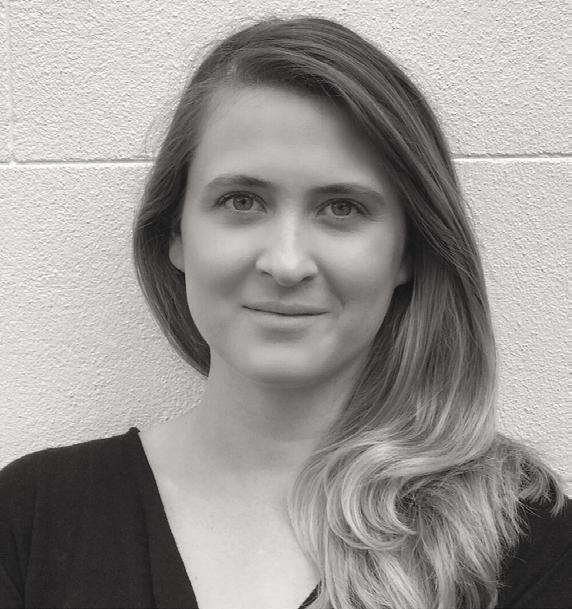
7 minute read
Your place of work - does it work for you?
Your Place of Work
Does it work for you
Advertisement
BY AMALIA CHILIANIS
—Walt Disney
You might not appreciate the impact the built environment or a particular place has on you, until you no longer work there. You might not be aware of what type of physical work environment works best for you. Or assume that your place of work is not really significant, and you can perform at your best anywhere. But context and environment matters. All work happens in a physical environment, a place. Understanding both the physical impact of your place of work and your attitude toward it can improve your wellbeing, opportunities for flow, and increase your productivity and satisfaction.
As humans, we have fundamental needs for comfort; first, for physical comfort and then functional and psychological com-
fort. From years of experience delivering training programs, it doesn’t matter how great the training was if the room was too hot, too cold or the catering inedible, complaints were plentiful and the experience suboptimal. Additionally, as humans we attach meaning to a place, based on our own interpretation, and therefore a person’s attitude toward the physical environment in which they work has an impact on their thoughts, emotions and intentions.
A colleague of mine, spent over 4 years working at the Sydney Opera House. When she joined, her manager told her that in most organisations the people were the most valuable asset; but at the Sydney Opera House, it was the building. Everyone who works there is impacted by the history of the place, its “iconic” nature, world heritage status and the company mission, which is to “Be as bold and innovative as the building itself.” In this case, it is the physical environment that sets the standards and expectations for how people work. Every employee holds a very empowering role of being “temporary custodians” of the building and all that it stands for. When her role was made redundant, she describes being devastated as her identity was very tightly entwined with her role at the Opera House. It was very difficult to lose her connection to the place and the people who worked there. You can see from her example that her sense of identity was connected to both her job and the place that she worked.
While her experience at such an iconic workplace may be rare, it does demonstrate the impact a workplace can have from the physical environment and your attitude toward it, both of which have been studied in environmental psychology.

In a study on a sense of place as an attitude, psychologists defined “sense of place” as a multidimensional construct of place identity, place attachment and place dependence. Place identity involving a person’s ideas, beliefs and values about their own identity in relation to a place. This is cognitive, that is, your thoughts about your identity. Place attachment can be described as a positive bond that develops between groups or individuals and their environment; therefore, it is emotional. Place dependence is how well it serves a goal, impacting your intentions to stay at that place or go. In the earlier example, her identity was certainly attached to the place; she was attached to the place and the relationships formed there and she had intentions to stay there until she retired in possibly another 3 to 5 years.
On an anecdotal level, you might have witnessed or experienced something similar, that your identity has been entwined with a place of work. When people leave a place of work after a significant investment
Photo by: @domenicoloia Unsplash | Domenico Loia
of time, this can have an impact on their identity and confidence. While this is due to more than just the built environment, it is intertwined with relationships, a sense of belonging, pride and many other factors.
Your physical place of work
Jacqueline Vischer is a professor and leading expert on the physical environment and explains that first people need physical comfort, then functional comfort and psychological comfort. In the Western world, it’s estimated we spend up to 90% of our time indoors, and the experience of the global pandemic confirmed, if not likely increased that figure at least during lockdown periods. Most places of work meet the fundamental needs for physical safety; however, if this is a concern for you where you currently work please seek assistance. For those in office-bound work, whether that be at home or elsewhere, ensure the functional set-up is best for your wellbeing. Many workplaces provide ergonomic assessments or have information available. If not, you can do an internet search for advice on setting up your workstation.
For functional comfort, a workspace is designed to support people’s tasks. According to Vischer, extensive research has shown that a range of elements can directly affect task performance, including heating and cooling, ventilation, air quality, lighting, windows, noise, workstation size and layout, access to collaborative shared spaces, cleaning and maintenance and safety and security. Her insight to provide optimal physical comfort is ideally to have a workspace that is adaptable, where lighting is adjustable and where environments support constructive and flowing collaboration as well as focused concentration and privacy. Additional research has proven that natural light in the workspace makes people happier and motivated, and that natural elements; such as views of nature and indoor plants, have a positive influence on mental fatigue and a restorative value.
Working from home
Given the significant shifts to the number of people working from home, I recommend taking some of the above insights and applying them to the place in your home where you work (if applicable). Consider the following: ▶ Is it a separate or zoned area within your home? ▶ Is it comfortable as far as heating and cooling? ▶ Is your workspace functional? ▶ Do you have good natural light and lighting? ▶ Can you see any nature or do you have any indoor plants?
If, like many, you are working on your kitchen table or in your lounge room, try to have some way of separating your work life from your home life. Can you pack it away at the end of the day? Is there some way you can signify when you are working and when it is your personal time? A colleague of mine who found herself working in a space where she also has her own “play and personal time” used fun party lighting that surrounds her workspace that sits in her lounge area. When she is doing things for herself for fun, she turns the lights on. Others have invested in a stand-up desk that is easy to move around. I purchased one during COVID that fits together like Lego, without any bolts and is light enough to move from room to room. When I get sick of working in my office, I move into the lounge room, where the natural light and views of nature are better.
Other former colleagues had challenges with home-schooling young children while working full time. They created a makeshift workstation in their bedroom, and also found that they had to split their day: work very early in the morning, take time during the day to home-school and then work again later into the evening. Being able to close the door and hope that her sons stayed asleep so she could continue working, while not ideal, certainly helped get through that time. Think through what is practical and works best for you.
Physical, functional and psychological comfort is necessary for your ability to perform at your best. Use the tips above to help you set up your workspace for greater productivity and wellbeing, ensure you have good lighting, natural light, and a view of nature either, inside or out. The good news is, much of this is simple and easy to implement, so that your place of work has a positive impact on your attitude, commitment and satisfaction.
About the Writer
Amalia Chilianis is a coach with over 25 years of corporate experience, shortly due to publish her first book outlining a holistic and science-based approach to changing careers and jobs. She is a courageous leader and an encourager of others who is determined that the next 20 years of work and life will be different to the last. www.amaliachilianis.com
Image of Rylie Baye by Levi VanderAa | Rylie is wearing Upcycled Vintage Linen Goddess Dress by Cee VanderAa - AUD $160.00











